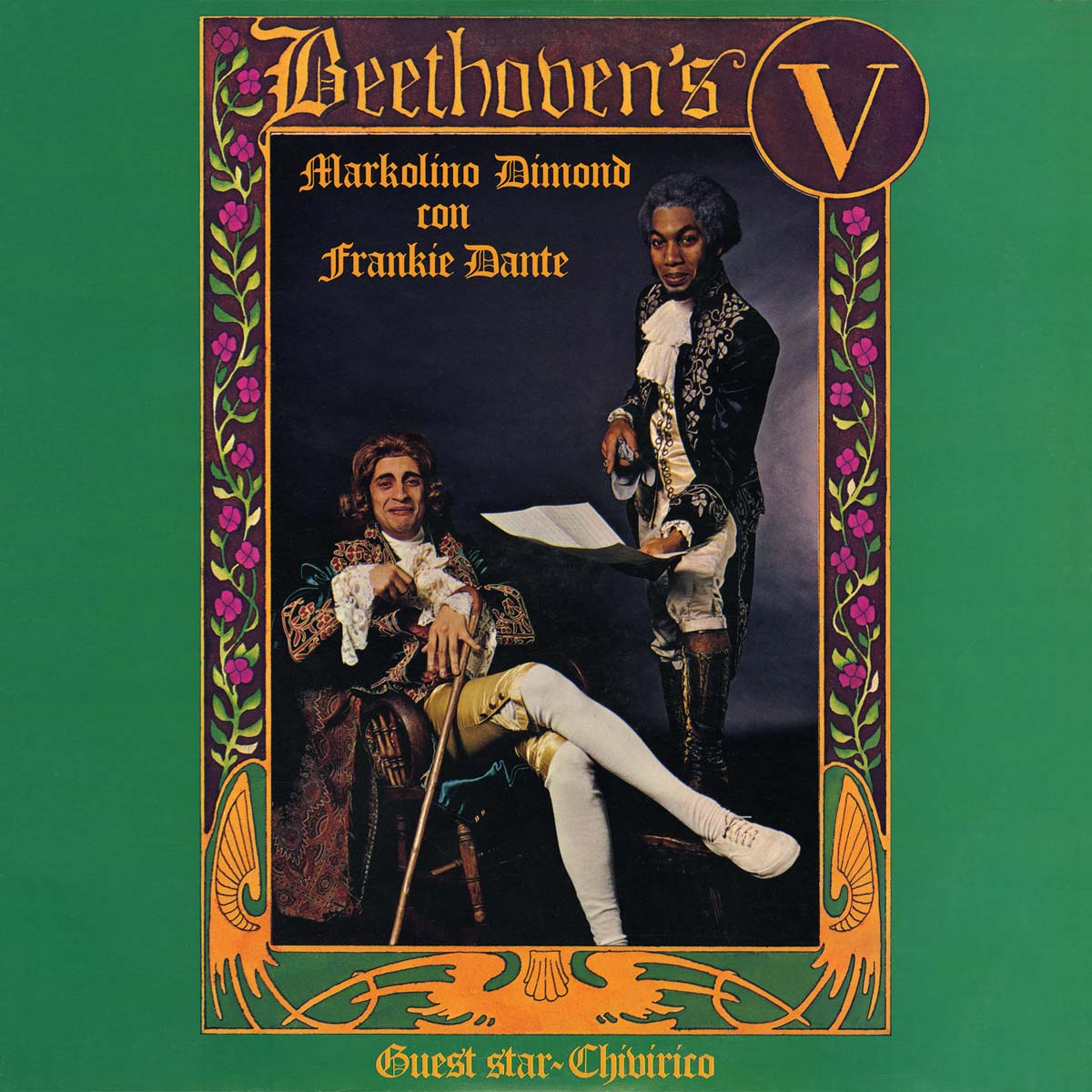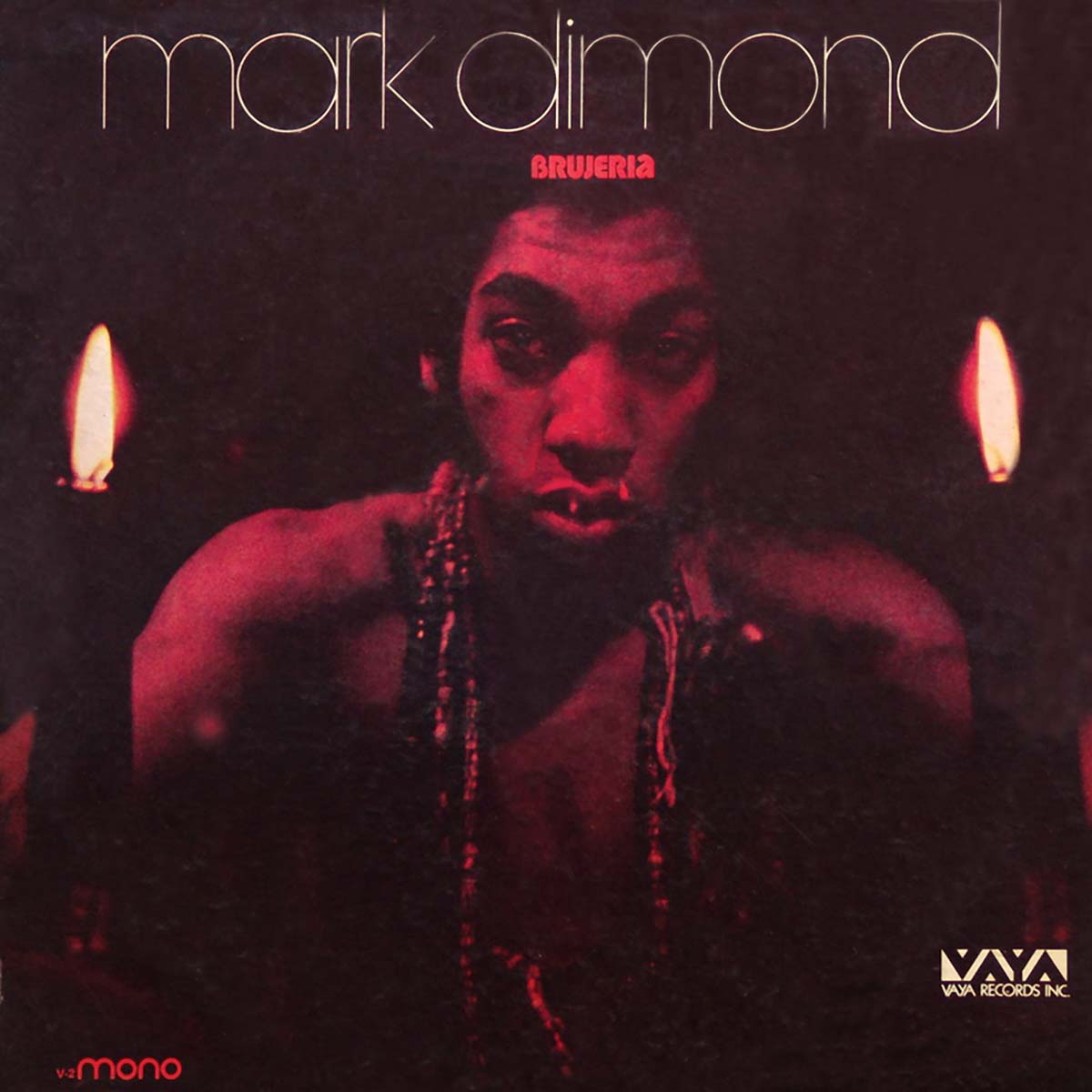
“Wow, Mark Dimond just out-Eddied Eddie!” said the former La Perfecta percussionist Manny Oquendo to bassist Andy Gonzalez after finishing a set at Brooklyn’s St. George Hotel. Pianist Mark “Markolino” Dimond was performing with Oquendo’s band, Libre, who had played along with a full plate of acts including Eddie Palmieri, who had opened the evening.
Markolino, who lived on Ninetieth and Third Avenue, is one of the greatest unsung talents in the history of Latin music, and this album is his masterpiece. Dimond got his start with Willie Colón, and that is no surprise when you consider that Willie had an unbelievable ear for talent and a willingness to bring cats from every background into the fold. We owe W.A.C. a debt of gratitude for plucking this African American keyboard wizard out of obscurity and letting his light shine.
Markolino was an audacious soloist, and his playing is, to my ear, infused with a punishing montuno, courtesy of Eddie Palmieri (his idol) and Cuban keyboard masters like Peruchin, and melded with an innovative chordal and chromatic solo approach coming in part from Coltrane alumnus and Philadelphian McCoy Tyner, who influenced countless pianists throughout the ’60s and ’70s. While the leap from Coltrane to Palmieri may seem like a big one, Markolino was one of the select few cats who effortlessly straddled both worlds. Mark’s partner on this album was another man who covered the waterfront, and his story is equally compelling. “Frankie Dante was a security guard at Macy’s, but he really wanted to be John Lennon,” says my pal Larry Harlow who produced this landmark recording and so many other seminal works in the history of Fania. “He was the Dominican John Lennon,” Harlow laughs. “He wore those round rose-colored glasses, just like John Lennon.” The Dominican John Lennon? That was something I never imagined in a million years, but I guess it kind of makes sense when you consider the incredible influence that Lennon exerted on popular culture as a whole, both as a musician and as a man. Not to mention that Dante, with his own group Orquesta Flamboyan, recorded the anti-Vietnam song “Paz” in 1969, then later recorded the political burner “Presidente Dante” with Flamboyan and Larry Harlow.
“Frankie was definitely an eccentric,” says Dante’s peer Arturo Campa, sonero for Eddie Palmieri from 1969 to 1974, during one of Eddie’s most fertile and memorable periods. Arturo is a very bright and interesting cat who has rarely granted interviews, so I was particularly excited when he agreed to talk to me about his memories of Frankie Dante. “I recall him wearing capes and sneakers onstage at various gigs. He had one outfit that he called his Batman cape, and this black-caped singer was something you couldn’t easily miss or forget,” he laughs. “I don’t think that Frankie was looked upon as a really great singer,” Campa continues. “He was somewhat limited in that regard, but he was heavily influenced by the phrasing of Ismael Quintana, which you can clearly hear in his recordings. I can tell you that both he and Markolino were very well liked and that the salsa scene at that time felt [like] one very large family.” Andy Gonzalez echoed that sentiment, telling me, “Frankie copied Quintana right down to his dance moves and the way he played maracas.” Traveling from John Lennon to Ismael Quintana is a long and winding road, and Frankie Dante walked every funky mile.
Backing Dante on the album is an all-star coro, with Chivirico Davila credited as guest star. Chivirico is an interesting figure, because even though me made a handful of excellent albums as a lead vocalist for the Cotique label, his career was largely marked by being one of the first-call coristas of the golden age of New York salsa, alongside cats like Yayo el Indio, who shares coro duties on this album. Davila’s greatest gift as a solo cantante was as a bolero singer, and he was wisely used largely in that capacity here as well. The most unexpected aspect of Davila’s appearance as a guest artist is that while it is ostensibly a Frankie Dante and Markolino outing, Chivirico is actually singing the lead vocal on “Sabroson,” which has long been the favorite dance cut for many hard-core cocolos. As a corista, Chivirico was unstoppable, and the three-voice team of Chivirico, Yayo, and Pete “Conde” Rodriguez on this album is pure magic. The blend these guys achieved is supple and grooving in the same instant. I am still struck by the degree that a well-executed coro added to the overall power of the album and indeed to the whole Fania experience. The album as a whole is arranged by Mark Dimond, with the exception of “Yo No Tengo Amigo” by Marty Sheller, one of the greatest arrangers in the salsa field and an original member of the pioneering Latin jazz ensemble led by Sabu Martinez. While the arranging by Mark is solid throughout, Marty’s lone chart displays a subtle sophistication that is not quite matched by Markolino, who made the stuff swing hard but did not possess the same deep harmonic insight that Marty long demonstrated.
From a compositional standpoint, the album is mainly a Mark Dimond affair, with five of the eight tracks composed by him alone. The remainder are Cuban titles, and the final track, “Por Que Adore,” was written by the phenomenal Tite Curet Alonso, the shockingly prolific composer. When I was listening to this album with a critical ear, I was particularly struck by this song, as the poetry that Tite imbues his work with is pretty unmistakable. It was an astute choice to sequence this album with Tite having la palabra última. Likewise, starting the album with the Markolino original “Sabroson” perfectly sets the stage for the loose and super funky vibe that permeates this album. The two Cuban songs included remind us of the debt everyone owes Cuba and capture the zeitgeist of the típico movement in New York that honored that tradition.
It is a shame that Markolino and Frankie did not make more records, but it also makes albums like Beethoven’s V seem all the more magical because of their rarity. In a style that was dominated by Puerto Ricans and Cubans, this pairing of a Dominican singer and an African American pianist serves as a poignant reminder of the universal and timeless magnetism of salsa music and the dizzying complexity and richness of New York City as an incubator for its global flowering.
Liner notes by Aaron Levinson Markolino Dimond con Frankie Dante Beethoven’s V (Cotique 1075) Guest star: Chivirico Originally released in 1975 Produced by Larry Harlow for Passing Clouds Music, Inc. Executive producers: Jerry Masucci and Johnny Pacheco Arranged by Mark Dimond (except “Yo No Tengo Amigo” arranged by Marty Sheller) Recorded at Good Vibrations Sound Studios, NYC Engineered by Jon Fausty Original cover and liner photos by Lee Marshall Original art and design by Ron Levine 1. Sabroson ** 2. Los Rumberos * 3. Ahora Si ** 4. El Quinto de Beethoven * 5. Maraquero * 6. Yo No Tengo Amigo ** 7. Camarones * 8. Por Que Adore ** * First session ** Second session Musicians Piano: Mark Dimond Bongos: Nicky Marrero * Pablito Rosario ** Conga: Frank Malabe Timbales: Mike Colazzo * Nicky Marrero ** Bass: Eddie “Guagua” Rivera Trombone: Louis Kahn Renaldo Jorge * Barry Rogers ** Trumpet: Randy Brecker * Lou Soloff ** Maracas: Junior Vazquez Coro: Yayo el Indio Pete “Conde” Rodriguez Ismael Quintana



